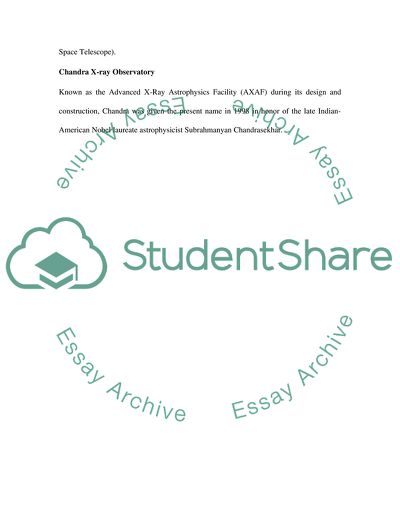Recent Discoveries with the Chandra X-Ray Telescope Essay Example | Topics and Well Written Essays - 1750 words. https://studentshare.org/astronomy/1738024-astronomy-class-final-essay-project-recent-discoveries-using-the-chandra-x-ray-telescope
Recent Discoveries With the Chandra X-Ray Telescope Essay Example | Topics and Well Written Essays - 1750 Words. https://studentshare.org/astronomy/1738024-astronomy-class-final-essay-project-recent-discoveries-using-the-chandra-x-ray-telescope.


